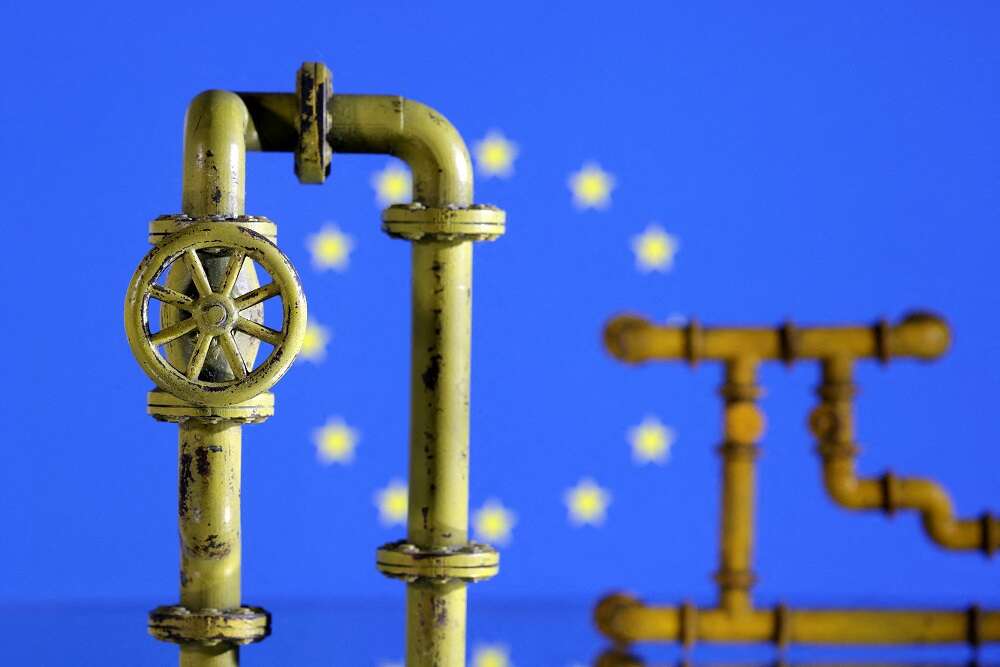
By Nina Chestney
LONDON (Reuters) – European benchmark gas prices have been steadily declining over the past few months to near their levels before war broke out in Ukraine. [NG/EU]
Europe has been facing an energy supply squeeze this year as Russia has cut gas flows after the West imposed sanctions in response to its invasion of Ukraine in late February.
WHY HAVE GAS PRICES BEEN FALLING RECENTLY?
Despite dwindling Russian gas pipeline supplies, Dutch front-month gas, the European benchmark, has fallen 67% since hitting an all-time high in August to around 100 euros per megawatt hour and is at the lowest level since mid-June.
The price is 12.6% higher than this time last year.
Although the winter gas season began in early October, when heating demand typically rises, Europe has experienced milder weather than usual for the time of year, which has helped dampen demand.
The European Union as a whole also met a target for refilling gas storage sites to 80% by Nov. 1 ahead of time. Storage facilities are currently 93% full, compared with 77% this time last year, Gas Infrastructure Europe data shows.
Liquefied natural gas (LNG) supply and Norwegian pipeline supply have been strong. As of last week, LNG imports into Europe totalled 2.81 million tonnes, according to Nikoline Bromander, an analyst at consultancy Rystad Energy.
Added to that, wind power output has been quite high, which reduces demand for gas from power plants. Agreement among EU countries to cooperate on reducing prices and consumption have also contributed.
The European Union’s debate on measures to rein in the cost of the fuel has also put pressure on prices, according to analysts, including their discussions about an EU-wide cap on prices and limiting intra-day price fluctuations.
WILL WEAKER PRICES BE SUSTAINED?
Much depends on the weather and the impact on demand.
Forecasts show that Europe will continue to experience milder temperatures for the next two weeks. This will slow the rate of withdrawals from storage.
Longer-term, forecasts indicate that much of Europe will have milder-than-normal temperatures this winter. The difference between a cold and a mild winter is around 25 billion cubic meters (bcm) or 7-8% of total EU gas demand, Bromander said.
But analysts have warned against complacency.
“The temptation in Europe will be to take a sigh of relief and acknowledge the hard work and tough decisions on demand and supply that have been taken,” Bromander said.
Factors such as higher demand for LNG from Asia if it experiences a cold winter, and any delays to LNG outages or additional large outages at gas infrastructure, could affect prices.
A number of LNG cargoes have been circling off the coasts of Spain unable to secure slots to unload, exposing Europe’s lack of regasification capacity.
“Are we out of the woods? Absolutely not. While it’s mild now, a prolonged cold spell could still lead to surging prices towards the end of winter, or indeed next winter,” added Tom Marzec-Manser, head of gas analytics at ICIS.
DOES THIS MEAN LOWER PRICES FOR HOUSEHOLDS AND INDUSTRY?
Lower wholesale prices do not immediately translate into lower retail prices for consumers.
Energy suppliers hedge, or buy in advance, the power they need for customers, typically around six months ahead, meaning rises or falls in the wholesale market take time to filter through to people’s bills.
In response to high energy prices, several industries which rely on gas as a feedstock, such as fertilisers, ceramics, glass and cement, have reduced production this year.
“The risk with the sell-off in the European gas market is the potential that demand starts to pick up,” said analysts at ING Research, adding that this would make it increasingly difficult for Europe to rebuild storage levels next year ahead of the 2023/24 winter.
(Reporting by Nina Chestney; Additional reporting by Bozorgmehr Sharafedin and Susanna Twidale; Editing by David Holmes)


